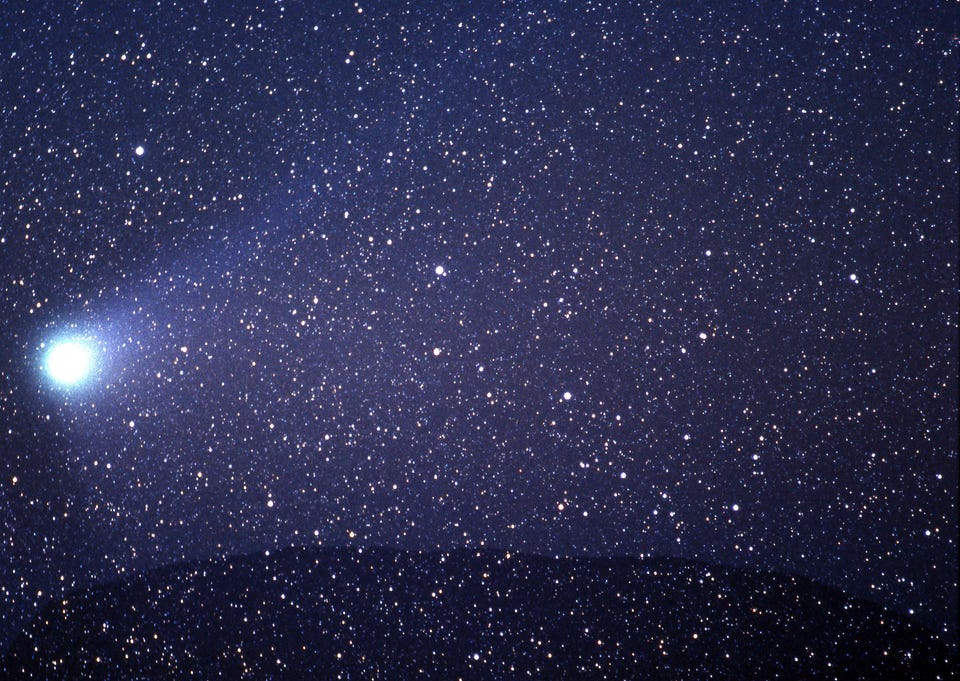The Return Of Halley’s Comet Begins Soon. See Its ‘Shooting Stars’ This Week 37 Years After Last Appearance


This week sees the peak of the Eta-Aqaurids meteor shower, an annual meteor shower caused by the world’s most famous comet—1P Halley.
Halley’s comet—named after the English astronomer who plotted its orbit in the 17th century—is not returning to the solar system this week. It orbits the Sun every 75–79 years and was last seen in 1986.
That was 37 years ago, but that’s a magic number for one of the least reflective objects in the solar system. It’s how long it takes to travel to and fro between the Sun and the outer solar system. In fact, in November 2023 Halley’s comet will get as far as it ever does from the Sun—about 35 Earth-Sun distances past the orbit of Neptune—and begin to drift back towards the Sun.
Currently in the constellation Hydra, “the water snake,” Halley’s comet will next be visible from Earth in the summer of 2061 when it’s expected to come much closer—and, therefore, be much brighter—that is was in 1986.
Halley’s comet’s two meteor showers
However, each year its remains in the inner solar system remind us of its periodic presence.
Both May’s Eta-Aqaurid and October’s Orionid meteor showers are caused by dust and debris left in the inner solar system by Halley’s comet. Both are named after the constellations that the “shooting stars” appear to emanate from. They can, however, be seen anywhere in the night sky.
When is the see the Eta-Aqaurid meteor shower?
The Eta-Aqaurids occur between April 19 to May 28, but peaks this year on May 5-6. The general advice is to get outside around midnight—when the constellation Aquarius is highest in the sky—and preferably be in a dark sky destination (i.e. as far from an urban area as possible).
How to see the Eta-Aqaurid meteor shower
However, 2023 is a bit different. Unfortunately, on the same date—May 5—is the rise of the full “Flower Moon.” That’s not complete deal-breaker because this particular meteor shower is known for meteors with particularly bright wakes. It’s often possible to see with the naked eye a bright “shooting star” that appears super-bright for perhaps a second.
In a dark sky between 10 and 30 meteors are expected each hour during the peak of the Eta-Aquarids (though it’s the southern hemisphere that tend to see higher rates), but given the position of the Moon there’s little point in finding a dark location.
How to photograph the Eta-Aquarids meteor shower
Perhaps the best way to get a glimpse of a bit of Halley’s comet this year is by using a camera. Put a DSLR or mirrorless camera in your backyard and have it take a series of 30-second exposures and it may pick-up a bright “shooting star” or two. A wide-angle lens (14 mm or similar), a tripod, f/2.8 aperture and ISO 800 are recommended. Use infinity focus, fiddle with the settings until you have a good balanced image of the night sky that shows sharp stars (point it away from the Moon and its trajectory) then put your camera on continuous mode.
Wishing you clear skies and wide eyes.
